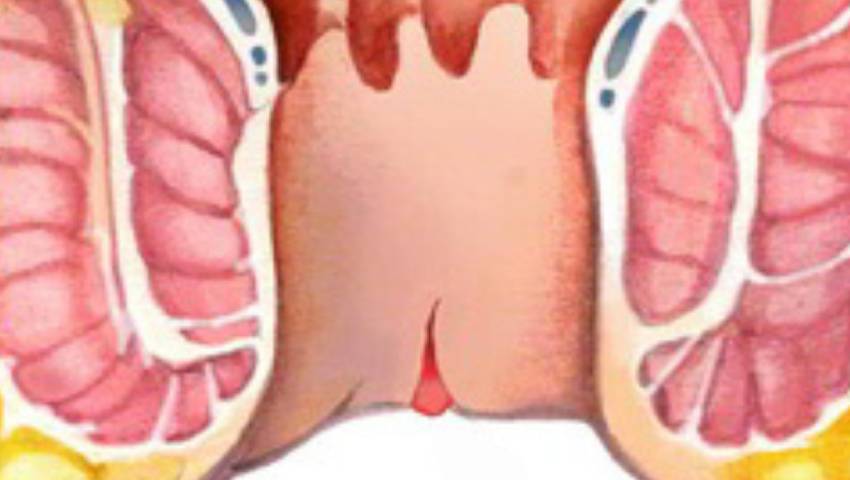
In the realm of anorectal diseases, understanding the difference between hemorrhoids and anal fissures is consummated. Dr. Arun Nair a gastro surgeon in Thrissur emphasizes the significance of recognizing their unique symptoms similar to pain and bleeding — to guide proper care. Despite their similarities, these conditions demand different treatments. Dr. Arun Nair encourages people not to suffer in silence due to embarrassment; rather, seeking timely intervention can effectively address discomfort. Whether through lifestyle adaptations, over-the-counter medications, or medical procedures, relief from symptoms and an advanced quality of life are attainable. With Dr. Arun Nair’s guidance, people can confidently navigate their healthcare journey and find relief from anal discomfort.
First, understand what are hemorrhoids and Anal fissures?
What are hemorrhoids?
Hemorrhoids also know piles are blown veins located in the lower part of the rectum and anus, such as swollen veins that happen in the legs. They can develop internally, within the rectum, or externally, under the skin around the anus. Hemorrhoids can cause discomfort, itching, pain, and bleeding, making them a common but frequently uncomfortable condition. They can be internal or external:
- Internal hemorrhoids develop inside the rectum. They usually aren’t visible but can cause painless bleeding during bowel movements.
- External hemorrhoids form under the skin around the anus. These can be itchy or painful and sometimes bleed.
What are anal fissures?
Anal fissures are small gashes or cracks in the skinny, moist tissue( mucosa) that lines the anus. These fissures can be due to numerous factors but are generally associated with trauma or injury to the anal conduit. Anal fissures constantly affect violent pain during and after bowel movements, along with bleeding.
What is the Difference: Anal Fissures vs. Hemorrhoids?
So, how do you tell the difference between anal fissures and hemorrhoids? While both can beget pain and bleeding, there are some crucial distinctions:
- Spots: Hemorrhoids are usually located moreover inside the rectum( internal) or outside the anus( external), whereas anal fissures are fragile rips in the surface around the anus.
- Symptoms: While both can affect pain and bleeding, hemorrhoids may also cause itching, swelling, and a lump near the anus. Anal fissures frequently affect sharp pain during bowel movements and may react in visible blood on the coprolite or toilet paper.
- Causes: Hemorrhoids are constantly caused by swelled pressure on the veins in the rectum and anus, while anal fissures are usually the result of trauma or injury to the anal tube.
- Appearance: Hemorrhoids appear as blown veins, either inside or outside the anus, whereas anal fissures may look like fragile slits or cuts in the anal lining.
Treatment Options for Both:
Dr. Arun Nair, a Proctologist in Thrissur, will now help us explore treatment options for both conditions:
Hemorrhoids: Treatment for hemorrhoids frequently starts with lifestyle changes such as adding fiber input, drinking plenty of fluids, and avoiding straining during bowel motions. Over-the-counter creams, ointments, and suppositories may also support relieve symptoms. In tough cases, procedures such as rubber band ligation or surgery may be necessary.
Anal Fissures: Treatment for anal fissures generally involves keeping the area clean and dry, taking sitz baths to promote mending, and utilizing untoward creams or ointments to ease pain and discomfort. In some cases, prescription medications or procedures like botox injections or surgery may be needed.
In summary, recognizing the distinguish between hemorrhoids and anal fissures is vital for tailored treatment. While they may have combined symptoms, similar to pain and bleeding, their distinct features bear specific interventions. Seeking timely medical assistance, including booking appointments and consulting with specialists like Dr. Arun Nair, can lead to effective relief and enriched well-being. With informed decisions and professional guidance, people can address discomfort and enhance their quality of life.
Recent News

How to Manage Fatty Liver?
14th April 2025
Is Your Constipation Constant? Here’s What
21st March 2025
When Should You Consider Surgery for
12th March 2025
What is Swallowing Disorder? How to
27th February 2025
Is Laser Surgery Good for Anal
3rd February 2025
5 Early Signs of Liver Damage
8th January 2025
The Differences Between Crohn’s and Ulcerative
21st December 2024
Diagnosed with IBD? Here’s What You
10th December 2024
Gallbladder Stone Treatment Pros and Cons
21st November 2024
7 Silent Signs You Have A
24th October 2024Contact info
1ST FLOOR ZABS FORT building, Civil Lane Road, Poothole P.O, Thrissur, Kerala 680004
Church Post Office Road near Parumala, Thiruvalla, Kerala 689626
+91-9539988886
drarungastrosurgeon@gmail.com
St. Gregorios Hospital, Thiruvalla
The Gastro Clinic(Elixir Clinic), Thrissur
© 2025 Dr Arun Gastro Surgeon All rights reserved



